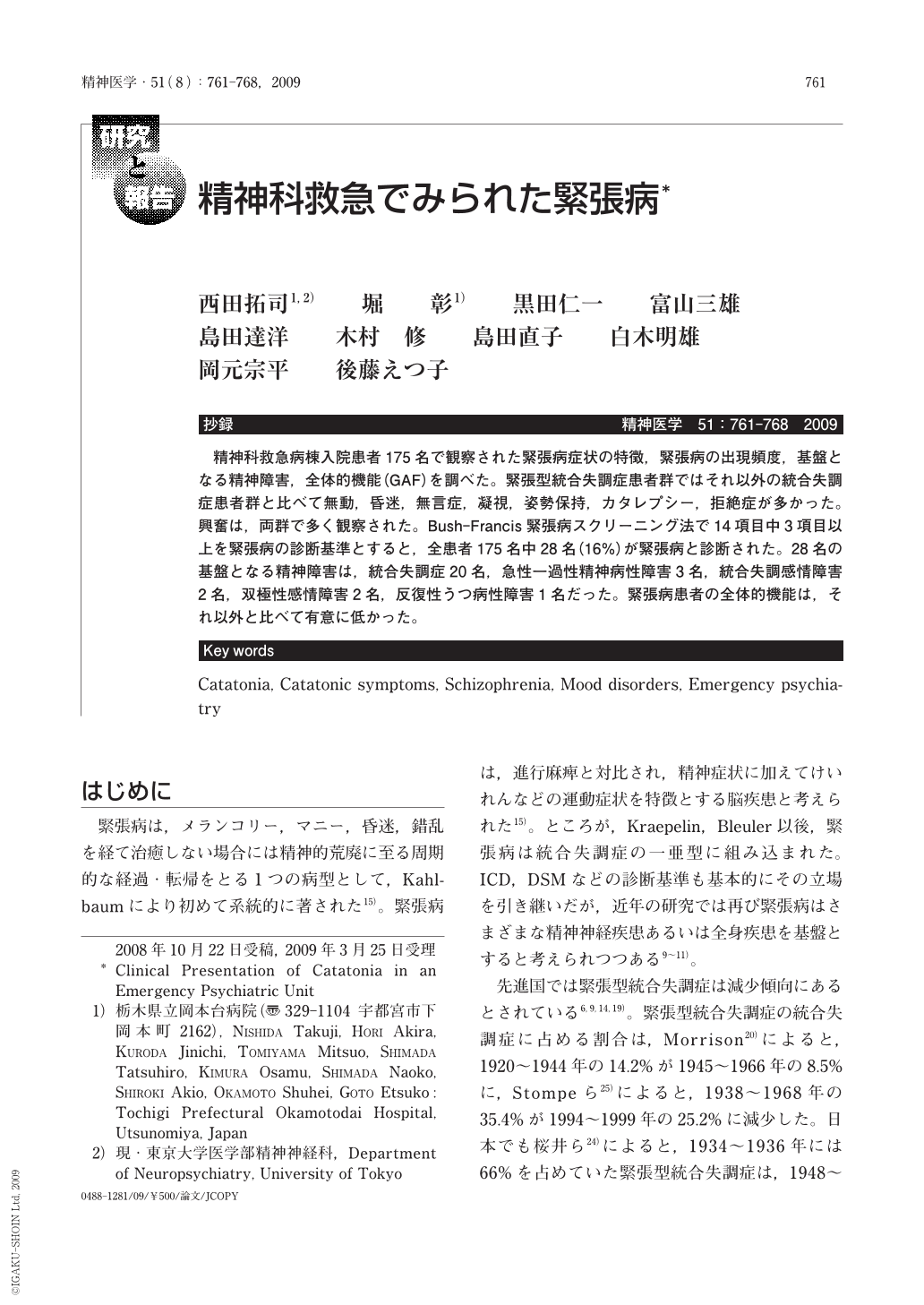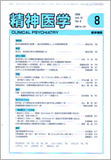Japanese
English
- 有料閲覧
- Abstract 文献概要
- 1ページ目 Look Inside
- 参考文献 Reference
抄録
精神科救急病棟入院患者175名で観察された緊張病症状の特徴,緊張病の出現頻度,基盤となる精神障害,全体的機能(GAF)を調べた。緊張型統合失調症患者群ではそれ以外の統合失調症患者群と比べて無動,昏迷,無言症,凝視,姿勢保持,カタレプシー,拒絶症が多かった。興奮は,両群で多く観察された。Bush-Francis緊張病スクリーニング法で14項目中3項目以上を緊張病の診断基準とすると,全患者175名中28名(16%)が緊張病と診断された。28名の基盤となる精神障害は,統合失調症20名,急性一過性精神病性障害3名,統合失調感情障害2名,双極性感情障害2名,反復性うつ病性障害1名だった。緊張病患者の全体的機能は,それ以外と比べて有意に低かった。
The aim of this study was to establish the clinical features of catatonia, the frequency at which it is diagnosed, conditions associated with this syndrome, and global assessment of function (GAF) of catatonic patients. We evaluated 175 patients admitted to an emergency psychiatric unit of a hospital in Tochigi, Japan. Immobility, stupor, mutism, staring, posturing, catalepsy, negativism were more frequently observed in patients with catatonic type schizophrenia than in those with other types of schizophrenia. The 14-item Bush-Francis Catatonia Screening Instrument was used and catatonia was considered to be present if at least 3 of the symptoms listed were present. Twenty-eight (16%) patients fulfilled the criteria for catatonia. These patients were diagnosed with schizophrenia (20 patients), acute and transient psychotic disorders (3 patients), schizoaffective disorders (2 patients), bipolar affective disorder (2 patients), and recurrent depressive disorder (1 patient). Patients with catatonia had significantly lower GAF scores than those without catatonia.

Copyright © 2009, Igaku-Shoin Ltd. All rights reserved.


